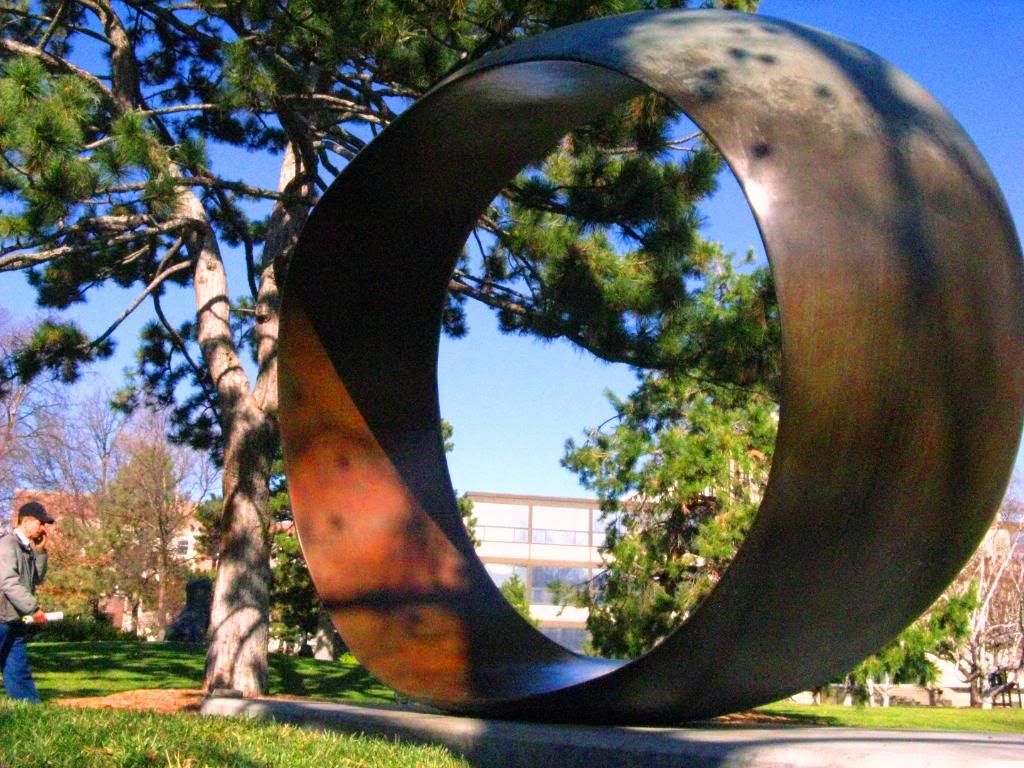Author's Note:
Abstract art can have many different arguments that it is communicating. This is as true with any sculpture as with Fragment X-O. This simplicity of this sculpture was intriguing for me as I was choosing my sculpture, but this simplicity is also what made deciphering its true argument very difficult. There were many global and local changes that occurred between each draft of my essay because I had to figure out what the argument of my sculpture was and specifically how it formed this argument. The thesis, not only developed from draft to draft but from my statement of purpose to my final draft.
The peer review allowed me to get my thoughts in order and work out the kinks in the essay to see what was working and what wasn’t. After identifying all of the issues that needed to be ironed out, I also had to figure out what went wrong and how to make it work. My peer reviewer, Ian, gave me many great ideas on how to fix the global issues. As identified by Ian, I needed to “focus on formulating a specific argument.” So, after looking at what I already had as my argument for Fragment X-O I discovered that it was “vague” and did not come across as I wanted it to. So, after working through what I wanted to say in my thesis statement, I made the argument more specific. After this initial revision, I went through every paragraph to fully explain how each rhetorical technique, from the logos of the title to the pathos of the coloration and lighting, worked to form the sculpture’s argument. At this juncture I also sifted through my ideas to pick out the parts that were working the best for me. One example of this was that I deleted the entire paragraph that spoke about the en-dash of the title and incorporated this information into the paragraph speaking about the “X”.
The next part of the revision I completed was another global revision that altered the form of my essay. Ian pointed out that “if the title of the piece is one of the ‘most important’ parts of the sculpture, shouldn’t it be addressed first?” This piece of advice made a lot of sense to me. In the first draft of my essay, I was not as worried about the structure of the essay as I was about getting all of my ideas out and onto paper–so this was an important part of the essay to address in the revision. The first change I made was to move the section of my paper pertaining to how the sculpture and the title worked together to form the argument up to the beginning of the paper, following the introduction. After bring this portion up, I also decided to move the two paragraphs relating to “arrangement of elements” up to follow the part working with the title so that both portions related to logos were grouped together.
Locally, I also made many revisions pertaining to word choice to help reduce the confusion and vagueness that had occurred in the first draft. One of the words that Ian did not understand pertained to my argument. Initially, I was working through the idea of a “counterargument” for the sculpture. After changing the thesis, I eliminated this confusion. Ian also said that he was confused about how I was referring to my sculpture. I was alternating between using “Fragment X-O” and “Fragment” and this shortening was confusing. So, I made each of the “Fragment”s into the full title to identify what I was talking about specifically.
I made many changes between the first and the second drafts of my essay. I worked to the strength’s identified by my peer reviewer and tried to heed his advice to make revisions that I knew I needed to make. Just being more specific in what I wanted to say and having a better understanding of what I thought the argument of Fragment X-O was allowed me to improve my essay. I hope that by making these large-scale revisions I have improved my essay and will now have a better understanding of what other abstract art forms are working to communicate.
Final Draft:
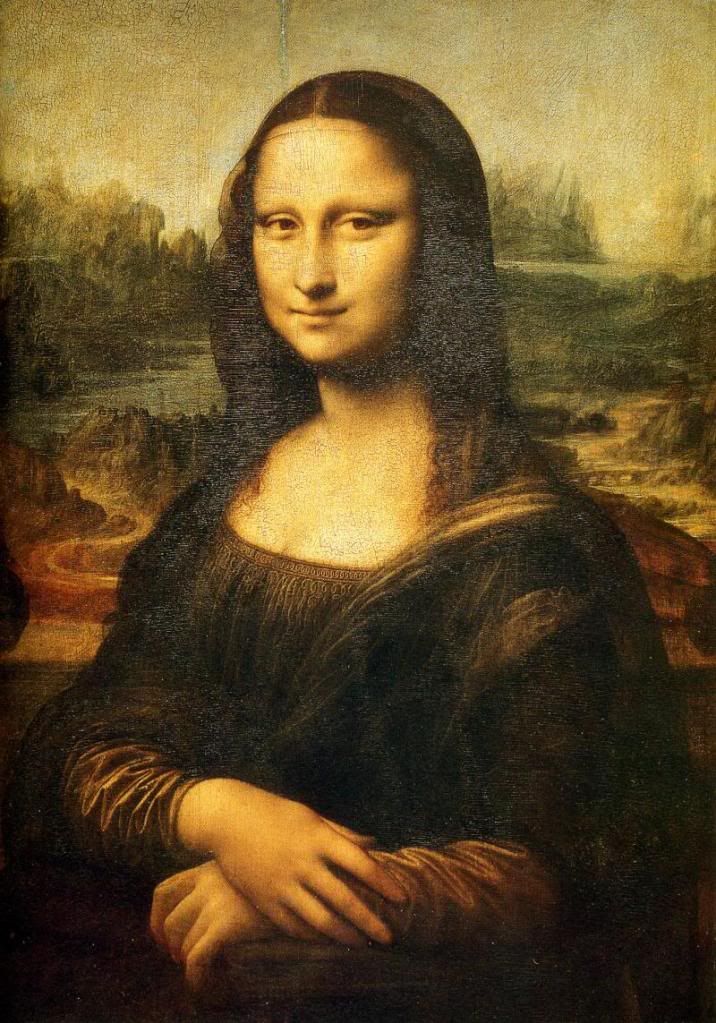
The creation of art is as old as time. As long as humans have been around, art has been created, from hieroglyphs carved on cave walls by the ancients to the portrait of Mona Lisa painted by Leonardo DaVinci. In every case, art was created with a purpose to portray a specific person, idea, or abstract representation or to appeal to the viewer’s emotions in a specific way. Some of the most interactive art are sculptures that are presented in a way in which the audience can explore and connect with the piece. One of the best environments for contact with sculptures is in a sculpture garden outdoors, where the art is readily available and it can interact with its surroundings as well as the people walking through. One such environment is the sculpture garden associated with the Sheldon Art gallery.
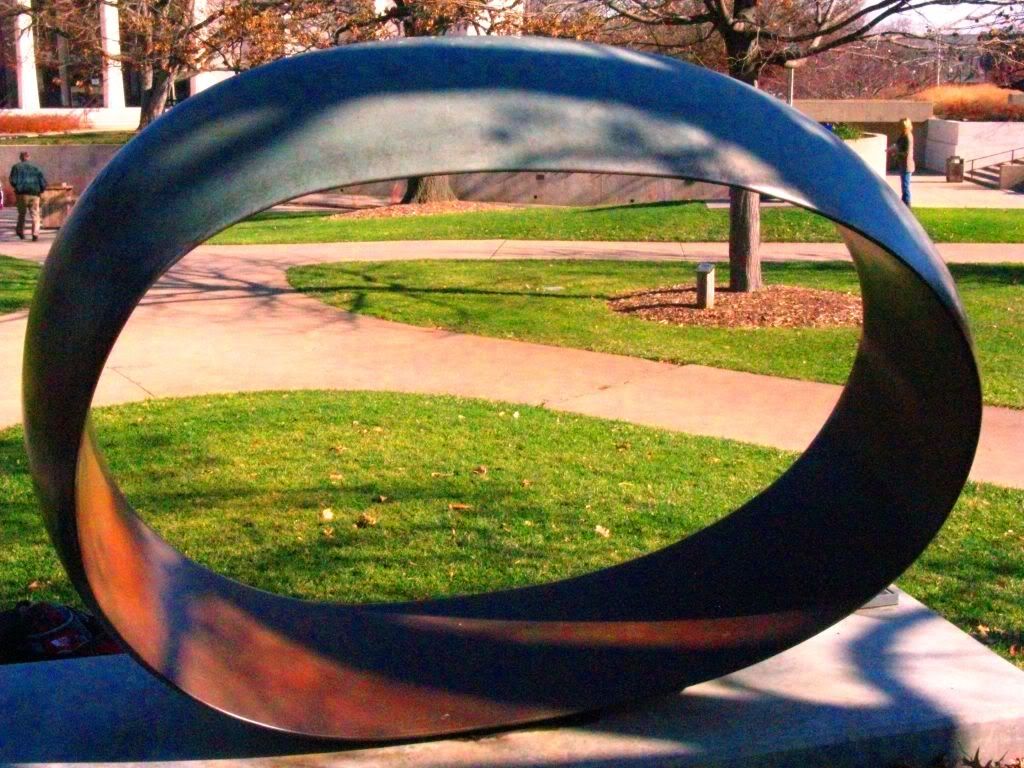
One of the most intriguing pieces of art in the Sheldon garden is Fragment X-O by Juan Hamilton. Juan Hamilton is an artist that began his career by working with clay and creating pottery.
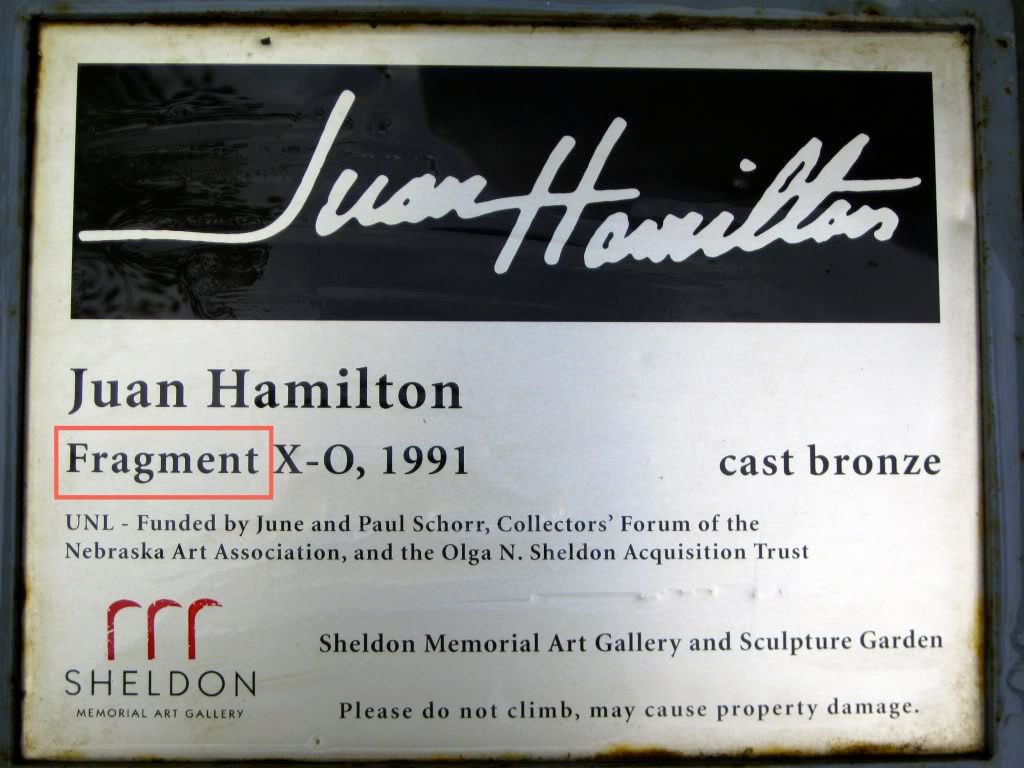
As a viewer approaches any piece of art, one of the first things considered is the title. This is particularly true of Fragment X-O, as its visual simplicity begs for explanation. Thus, the title is one of the most important and telling parts of the sculpture in terms of logos. This interaction between these words and the physical form helps to focus the audience to specific parts of the sculpture. In this case, the “words and [sculpture]… work together to have a larger effect than either alone has” (Wysocki and Lynch 302). From the beginning, this portion of the sculpture helps to aid in the argument that the sculpture is working to create. In the short title, “fragment” is the first word. This word works to immediately disregard the societal symbolism by creating a contrast between what is being seen (a complete circle) and what is being read. This word is one of the most important elements of the sculpture in terms of breaking down the societal expectations of what a circle is meant to represent.
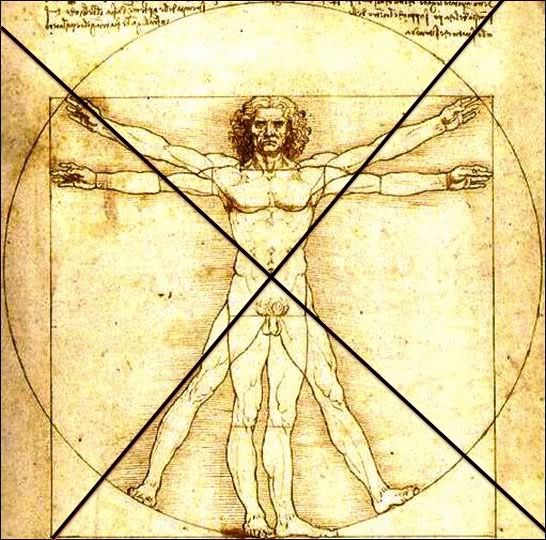
Next, the letter “X” appears in the title. This beckons the question, “where is the X?”. Well, it is nowhere in the sculpture. This is what is “fragmented” from the sculpture. The unity that is created by the use of the en-dash to connect the “X” and the “O” within the title is void in the sculpture. Again, here the sculpture is working against the idea of completeness that is associated with circles. This “X” also works to create a difference between the sculpture and the expectations of society because it adds another element to the circle, which is not included in the symbolism. Nonetheless, there are ways that this “X” can be added in using other materials outside of the sculpture itself. In respect to the framing aspect of this sculpture created the large empty center, another inanimate object could be introduced to the sculpture to complete it, or based on its size, a human could form the “X” by centering themselves in the hollow and spreading their legs and reaching their hands up to the sculpture, like DaVinci’s Virtuvian Man. In a way, a person would be imitating the title by also creating a connection between the “X” and the “O” through touch as the en-dash creates a connection between the “X” and the “O” in the title. By interacting with the art in such a manner, the physical constraints of the material are recognized by the audience in a way that no element within the sculpture could.
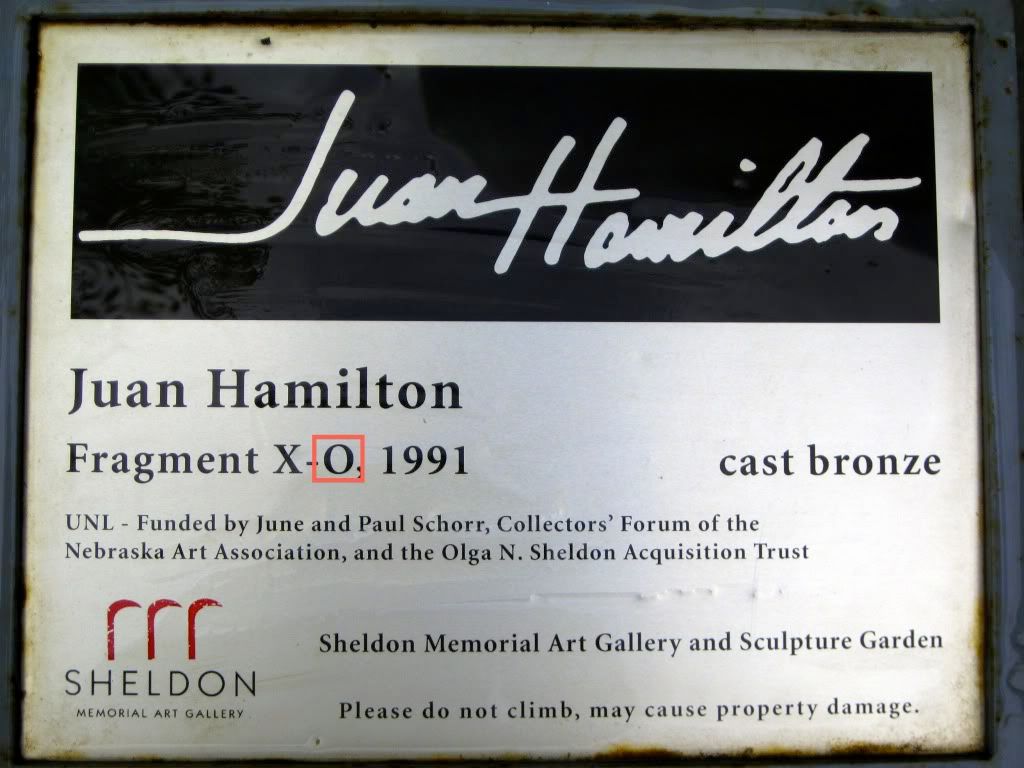
The “O” is the most important part of the title. The “O” is what is represented in this oversize bronze sculpture, shown to the left. But, there is a discontinuity between the letter “O” and what is presented. The letter “O” is perfect, complete and as tall as it is wide. It helps to form complete words and in many respects is also seen as a circle. The “O”-like circle is used as a symbol in western society for completeness and unity. However, the sculpture, Fragment X-O, is not perfect or unified in shape. It is wider than it is tall and parts of it are thicker than others. It is also not a perfect circle and does not even have the same color throughout. These imperfections are what help to form the argument. The irregularities work to show that even though this sculpture is a loose interpretation of a circle, many westerners will still try to associate it with the harmony of a circle. It is also working to create a material construct that cannot be disregarded as the audience looks to apply symbolism.
While the visual hierarchy does not work to further the argument, it helps to draw the audience into the sculpture above the others within the garden. The sculpture is placed in a clear hierarchy of the “element that first draws your attention being the largest and the darkest” (Wysocki and Lynch 287), however as this sculpture’s placement is examined further, it is noticed that it is placed upon a definitive concrete base. This base helps draw attention the sculpture by using contrast within the elements, namely between the highly structured, angled base and the soft lines of the sculpture. This contrast between these elements draws attention to the sculpture and ultimately draws the audience in to the argument that it is presenting.
The argument that the sculpture is working to create is also formed through the aesthetic elements. One of the first parts of the physicality noticed about Fragment X-O is that it is formed out of bronze. This bronze has interacted with the weather and the environment in which it is located in an interesting way. Through the weathering process, a variety of different hues have arisen on the patina of the sculpture. First of all, a saturated and dark red hue has developed on the inside of the ring. On the top outside a slightly unsaturated teal hue has developed. However, the dark bronze color has remained on portion of the sculpture that is closest to the ground. These hues all sit on opposite sides of the color wheel, which according to Compose, Design, Advocate “have the most contrast.” (Wysocki and Lynch 275). This contrast in the patina that is created through the various hues not only adds interest to the simple structure, but speaks to the argument as well. This coloration creates a sense of discord within the viewer that parallels the disagreement that the sculpture is creating between the symbolism that is applied by westerners and the material constraints of the sculpture. This variation in color is also not expected of a circle. Circles, in the western sense, are supposed to represent unity. So, again this variation in color is working to create a disparity in the physical construction.
Another aspect of the sculpture, which works to aid in the pathos, is the interaction of it with the environment in regards to lighting. One of the most important parts of the sculpture is its location outdoors. It interacts differently not only with the people that view it, but also the sunlight or lack thereof. On a bright, sunny day the sculpture seems to capture the light and then exude it outwards again. This makes the audience feel warm calm and tranquil as the light reflects off the soft curves. However, on a dull cloudy day the colors are dulled and the large “O” seems mysterious and foreboding. This contrast that is altered by the change in the weather also works to aid in the argument. The feelings that are evoked by the sculpture are different depending on “your specific cultural background [and] will shape your own specific response” (Wysocki and Lynch 274). This is also true of the symbolism that is applied to circular shapes. So, both of these factors are altered by our cultural backgrounds and the contrast created by the relationship between the weather and the sculpture help to illustrate this variation.
The placement of the Fragment X-O in the Sheldon sculpture garden adds to the overall argument that this sculpture is working to portray. Many of the other sculptures in the garden also embody parts of the hidden abstraction within Fragment X-O, such as Variable Wedge and Daimaru XV. These sculptures, which are in relative closeness to Fragment X-O, portray a similar theme to the argument that it is created for the disregard of the material constraints and continued use of the symbolism of unity and completeness that is applied to the shape of the circle by western culture. This argument is created through the use of rhetorical and aesthetic tools, such as logos through title interaction and arrangement of elements and pathos through coloration and lighting. Now that this argument has been created by this particular sculpture, what are the other sculptures around us saying? From the rest of the sculptures in the Sheldon Art Gallery sculpture garden to other art forms in our museums, each is working to create its own communication with its audience. So, next time you are at your local museum see if you can interpret what that painting on the wall is saying to you. Does this piece of art have something interesting to say about our world as Fragment X-O does?
University of Nebraska- Lincoln. Sheldon Memorial Art Gallery and Sculpture Garden. 2010. 20 April 2010
University of Texas at Austin. Juan Hamilton. 2010. 20 April 2010
Wysocki, Anne Frances and Dennis A. Lynch. Compose, Design, Advocate. Pearson Education, Inc., 2007.

